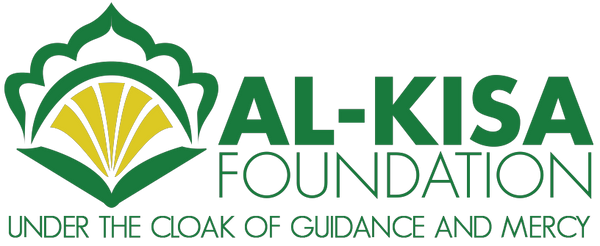INTRODUCTION TO HIGH SCHOOL ART
FOUNDATIONAL SKILLS AND EXPECTATIONS
With the understanding that many high school students require a year of fine arts as part of their graduation plan, the Kisa Art Curriculum has lesson plans that fortify students’ knowledge and literacy of art, while focusing on their spiritual and moral development. Based on the Roots of Risers character building themes, the art lessons also aim to introduce students to their rich Islamic cultural heritage and various applications of art.
HIGH SCHOOL ART PROJECTS INDEX
| THEME | INSPIRATION | PROJECT | MEDIUM |
|---|---|---|---|
| Wilāyah | Poem by Shams-i-Tabrīzī | Contemporary landscape illustration | Acrylic paint on canvas |
| Trust | “So put your trust in Allah, for you indeed stand on the manifest truth.” Noble Qurʾān 27:79 | Zentangle art | Drawing media |
| Patience | “With Every Difficulty, There is Relief.” Noble Qurʾān 94:5 | Abstract art | Mixed media |
| Respect | 4th Imam’s message from the book ‘Principles of Sociology in Islam’ al-islam.org | Architectural drawing - siteplan | Drawing media |
| Justice | Indeed Allah enjoins justice and kindness, and generosity towards relatives, and He forbids indecency, wrongdoing, and aggression. He advises you, so that you may take admonition.Noble Qurʾān 16:90 | Graphic design | Digital Art |
| Gratitude | "He (Prophet Sulaiman) said, "My Lord, enable me to be thankful for Your favour which You have bestowed upon me and upon my parents and so that I may act righteously in a manner that will please You, and include me (out of Your mercy) among Your righteous servants."Noble Qurʾān 27:19“And We had certainly given Luqman wisdom, and said, 'Be grateful to Allah.' And whoever is grateful is grateful (for the benefit) of himself. And whoever is ungrateful, then surely Allah is free of need and Praiseworthy."Noble Qurʾān 27:19 | Still life painting | Soft pastels |
| Mercy | “So which of the favors of your Lord would you deny?”Sūrah ar-Raḥmān | Traditional Islamic design Tazhib | Watercolor paint |
LESSON PLAN STRUCTURE
Here’s a brief outline of the lesson structure. Please refer to the section in the main curriculum about the Studio Thinking Framework by Project Zero for more information.
| LESSON SEGMENT | EXPLANATION | VIEWER |
|---|---|---|
| THEME | This section mentions the name of the specific Root of Risers, on which the art lesson is based. | Students |
| ART PROJECT | This section shows the name of the art project as well as an inspiration image. | Students |
| OBJECTIVES | There are usually three kinds of objectives we aim to achieve through teaching the art project - a spiritual objective, a technique/skill based objective and an art concept based objective. | Students |
| INSPIRATION | This section contains the Qur’anic verse, hadith or other spiritual content which inspires the creation of the art project. It is a literary branch of the main Roots of Risers theme. | Students |
| OVERVIEW & DISCUSSION | This section elaborates on the inspiration verse. It discusses the spiritual dimension of the art project. It also discusses the art skills, techniques and ideas that will be introduced to students in the art project. | Students |
| PROJECT PREPARATION | This section has two main components. It has a list of art materials needed for the project. It also has a ‘Background Prep’ section, with information on what the teacher needs to do before the lesson begins. | Teacher and/or Students. Online students may need to see this slide. |
| TIMEFRAME | This section breaks down the time needed to work on the project. The teacher can use this as a recommended guideline, since each art class is different and has students with different skill levels. | Teacher |
| MODIFICATIONS | This section has suggestions for project modifications and adaptations for the benefit of all types of learners in the classroom. | Teacher |
| CREATION PROCESS | This section shows the step by step process of project creation. It has sample images to guide students, as well as tips on modifications. Students should always be given a choice to add or subtract ideas in the creation process, and be encouraged to personalize their artwork to reflect their own ideas. | Students |
| PRESENTATION & PEER REVIEW | This section is about students displaying and presenting their work. It also encourages students to provide positive and valuable feedback to their peers. | Students |
| WHOLE GROUP DISCUSSION | This section has been set up as a reflection time for the teacher to ask students questions about their projects, to review the art concepts and wrap up the lesson with a reference to the spiritual context of the lesson. The teacher may choose to revisit the inspiration verse at this time. | Students |
| HOLISTIC ASSESSMENT | This section has a guide to help assess each student holistically. It has pointers for formative assessments. Teachers may also use other types of assessments to grade students. Please refer to the ‘Sample Assessments’ section in the main curriculum. | Teacher |
| LESSON SPECIFICS | This section mentions the National Core Arts Standards implemented in the lesson plan. It also lists the cross curricular connection between different subjects. | Teacher |
| INSPIRATION IMAGES | This section has a larger view of the images that were used as visual inspiration for the art project. | Students |
SCOPE AND SEQUENCE: MIDDLE & HIGH SCHOOLBY MEDIUM & TECHNIQUE

